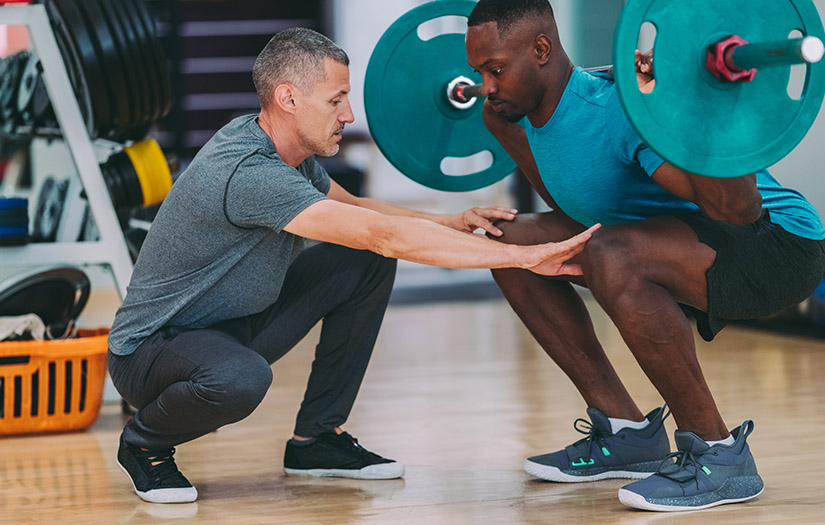Struggling to push more weight on your back squat? You’re not alone. At some point, we all hit that frustrating plateau where the bar refuses to move any higher—even though our effort is through the roof.
The back squat is one of the best exercises for building total-body strength, but it also demands a lot from your body. You need power from your legs, mobility from your hips, stability in your core, and confidence in your technique. If just one piece is off, your squat suffers.
The good news? You don’t have to just keep grinding through squats and hoping for the best. Adding the right accessory lifts can make a huge difference. These six exercises will strengthen weak links, improve your mechanics, and help you move more weight with better form.
Let’s break them down and see how they’ll make your squat stronger, safer, and smoother.
1. Bulgarian Split Squats
Why it helps:
This single-leg killer will expose muscle imbalances fast. It targets your quads, glutes, and hamstrings—all major players in the back squat. But since it’s unilateral, it also forces your core and stabilizers to engage way more than a traditional squat.
How to do it:
- Stand in front of a bench, place one foot behind you
- Lower your back knee toward the ground
- Keep your front knee tracking over your toes
- Drive through the front heel to stand back up
Pro tip: Add dumbbells to challenge yourself even more. If your legs shake—good. That’s where the growth happens.
2. Front Squats
Why it helps:
Front squats place the bar on your shoulders, which shifts the load forward and demands more from your quads and core. This strengthens the upright torso position that’s key to a solid back squat, especially if you tend to lean forward under heavy weight.
How to do it:
- Set the bar on your front delts with your elbows high
- Keep your chest up and torso tall
- Lower into a deep squat, then drive up through your heels
Pro tip: Start with light weight and focus on keeping your elbows up the whole time. If your elbows drop, your form collapses.
3. Romanian Deadlifts (RDLs)
Why it helps:
Your hamstrings and glutes are the engines of your squat. RDLs build massive posterior strength and teach you how to hinge at the hips—an essential movement pattern for keeping your squat safe and powerful.
How to do it:
- Stand with dumbbells or a barbell in front of your thighs
- Slight bend in the knees, hinge at the hips
- Lower the weight down your legs until you feel a stretch
- Squeeze your glutes and return to standing
Pro tip: Keep the movement slow and controlled. You should feel a strong stretch in your hamstrings without losing your back position.
4. Box Squats
Why it helps:
Box squats help with squat depth, control, and explosive strength. Sitting back onto the box reinforces proper hip engagement and prevents that dreaded knee-cave or collapse. It also teaches you to generate power from a dead stop—great for breaking through sticking points.
How to do it:
- Set a box behind you (just below parallel height)
- Squat back slowly until you sit on the box
- Pause briefly, then explode back up
Pro tip: Don’t plop down. Control the descent and keep tension in your legs at the bottom.
5. Walking Lunges
Why it helps:
Lunges build strong glutes, hamstrings, and quads while improving balance and coordination. They also stretch your hips as you move, which improves mobility over time—a huge plus if your squat depth feels stuck.
How to do it:
- Hold dumbbells at your sides
- Step forward into a deep lunge
- Push off the back foot to bring your feet together
- Repeat on the other side
Pro tip: Keep your chest up and your stride long. Try adding a pause at the bottom to really light up your legs.
6. Plank Variations (for Core Stability)
Why it helps:
A weak core is often the silent killer of a good squat. If your trunk collapses under the bar, your squat falls apart. Planks build the kind of deep, braced core stability you need to stay tight and upright during heavy lifts.
How to do it:
- Forearm plank: elbows under shoulders, squeeze your abs
- Side plank: hold on one side to strengthen obliques
- Plank with reach: extend one arm at a time to challenge balance
Pro tip: Don’t just hold and wait. Actively squeeze your glutes, brace your abs, and imagine pulling your elbows toward your toes.
Sample Accessory Day Plan (Add This to Your Week)
Here’s a quick way to add these moves into your training routine without overcomplicating things:
Accessory Day:
- Bulgarian Split Squats – 3 sets of 8 each leg
- Front Squats – 3 sets of 6–8
- RDLs – 3 sets of 10
- Walking Lunges – 2 sets of 20 steps
- Side Planks – 2 sets of 30 seconds per side
Do this on a day between your squat sessions, or tack 2–3 of these into your current leg day.
Final Thoughts
If your squat hasn’t been moving, the problem isn’t just more squats. It’s about fixing the weak links—muscle imbalances, poor mechanics, or missing strength in key areas.
These six exercises aren’t just random add-ons. They’re strategic tools that work with your squat, not against it. They’ll help you build more strength, improve your technique, and squat with more confidence.
Train smart. Target your weaknesses. And keep stacking that barbell. Let me know if you want a full 4-week squat accessory program—I’ve got something cooked up just for this.










